
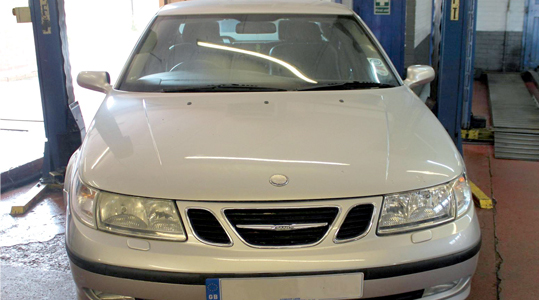
First introduced in 1997 to replace the 9000 model, the first generation 9-5 was a huge step forward for Saab. It proved a popular model in the UK with over 47,000 models sold until it was discontinued in 2010. A clutch replacement on the 9-5 can be a little tricky but with guidance from LuK the whole process will become much easier.
Nothing out of the ordinary is needed to complete the job; the only special tools required are a transmission jack, an engine support beam and a long axle stand. A two-post ramp was used in this example because a four-post ramp may not provide enough clearance. For safety reasons its considered best practice to disconnect the battery earth lead before commencing work. If the vehicle has alloy wheels it may be fitted with anti-theft wheel bolts, so make sure you have the key before you start.
Open the bonnet and remove the engine and battery cover. Loosen the battery terminals and disconnect the battery. Undo and remove the battery clamp and lift the battery out of the engine bay. Remove the three bolts securing the plastic battery tray (pictured, below) to the chassis.
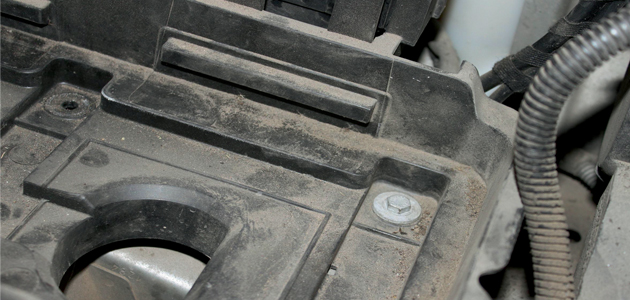
Unclip the satellite fuse box (pictured, below) and pull out the tray.
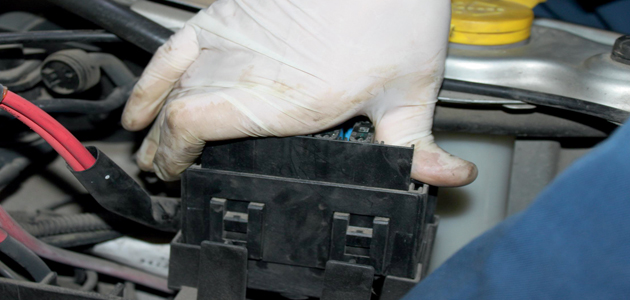
Remove the large fusebox near the n/s suspension turret (pictured, below) and stow it to one side.
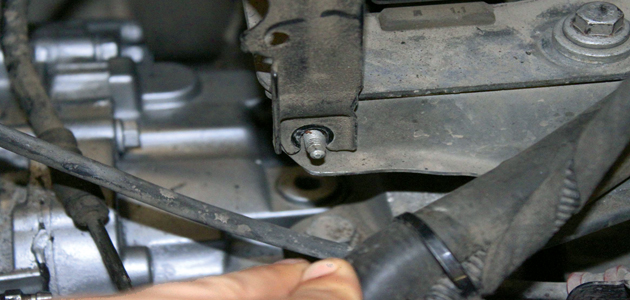
Clamp the hydraulic pipe connected to the slave cylinder (pictured, below) and disconnect it from the gearbox. Do this by removing the circlip and pulling the connection sharply upwards.
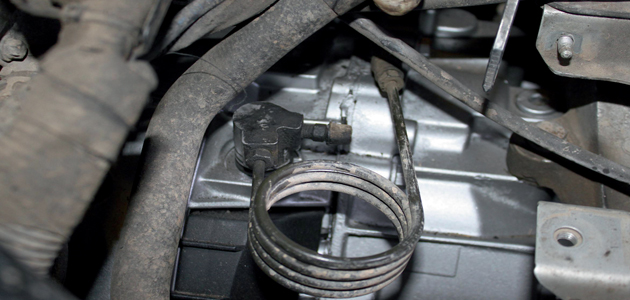
Making ties
Support the engine and secure the radiator and steering rack using cable ties. Undo the large nut on the gearbox mounting and undo the four bolts securing the rubber gearbox support and lift it out. Remove the bracket on top of the gearbox by removing the three bolts and undo the accessible upper bell housing bolts Raise the vehicle and remove both front wheels. Lower both plastic undertrays and the o/s and n/s wheel arch liners. Undo the hub nuts and release the lower arms on both sides by removing the single torx bolt (pictured, below).
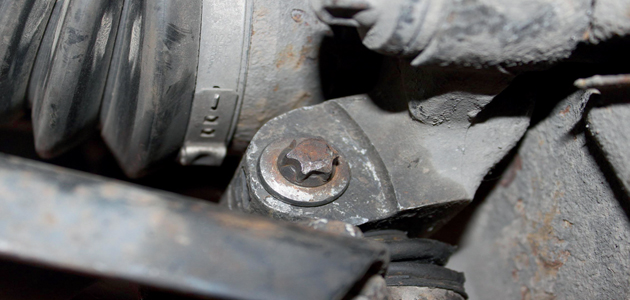
Release the steering track rod ends and the anti-roll bar linkage on the suspension struts. Undo the exhaust down pipe (pictured, below) and the connecting rubbers.
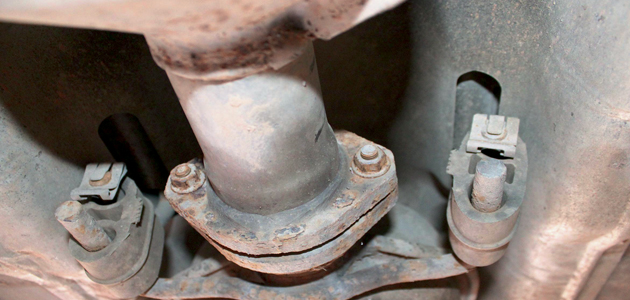
Remove the long bolts that secure the steering rack to the subframe and undo the three bolts securing the gear selector housing to the subframe (very tricky to get to). Undo and remove the gearbox steady bar to the subframe. Undo the two bolts holding the air filter housing to the subframe and remove the two brackets that bolt to the subframe that secure the radiator pack. Undo both rear subframe plates and support the subframe. Undo the final four subframe bolts and carefully lower it to the floor. Drain the gearbox fluid and undo the three bolts securing the long driveshaft support bearing to the engine.
Release and remove the long and short shafts from the hubs and gearbox. Disconnect the reverse light switch and undo the single torx bolt that secures the gear selector to the gearbox and release the attached linkage. Unbolt the rear gearbox mounting and remove the earth point (pictured, below) attached to the front gearbox mounting and the mounting itself.
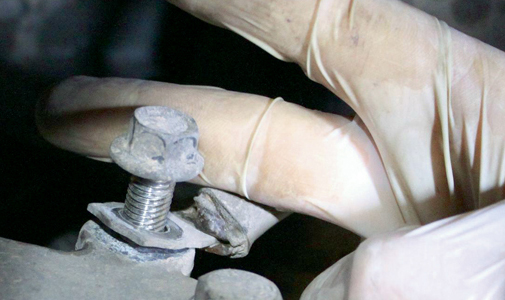
Undo the starter motor torx bolts and the supporting bracket bolts. Finally, while supporting the gearbox, remove the lower bell housing bolts and lower the gearbox carefully.
Check the DMF
With the clutch removed, check the dual mass flywheel (DMF) for signs of heat stress and evidence of grease loss. The DMF should also be tested for freeplay and rock between the primary and secondary masses, LuK tool number 400 0080 10 is specifically designed for this purpose on all LuK manufactured DMFs. Full instructions and tolerance data for all LuK DMFs are contained on a CD which comes with this special tool.
Clean the first motion shaft splines and any debris from the bell housing (especially important when a release bearing has failed). Put a small dab of high melting point grease (not a copper-based product) on the first motion shaft splines and make sure the new driven plate slides freely back and forth. This not only spreads the grease evenly, but also makes sure you have the correct kit. Wipe any excess grease off the shaft and driven plate hub then, using a universal alignment tool and checking the driven plate is the correct way round (note “Getriebe Seite” is German for “Gearbox Side”), the clutch can be bolted to the flywheel evenly and sequentially.
Before fitting the gearbox make sure the locating dowels are in place and not damaged. Refit any that have become dislodged and refit the gearbox. Make sure the gearbox bell housing bolts are secured before lowering the jack.
Refitting is the reverse of the removal.









